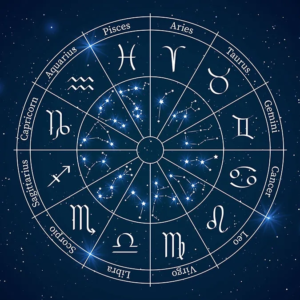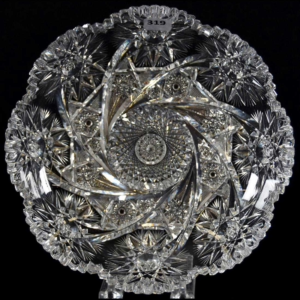Stone or Pepper – properties, virtues & benefits
OrPiment stone is a bright yellow mineral often used in art and painting since ancient times. However, due to its toxicity, it must be handled with care. Discover the characteristics and uses of this fascinating stone.
ORPIMENT CHARACTERISTICS
- Chakra: Solar plexus.
- Properties: Purification, protection, creativity, communication.
- Astrology: Mercury.
- Zodiac: Virgo, Gemini, Sagittarius.
- Elements: Fire, Earth.
- Colors: Bright yellow, golden yellow, orange-brown.
- Hardness: 1.5 – 2.
- Chemical Formula: As2S3.
- Associated god: None.
ORPIMENT – ITS HISTORY
The existence of the OrPiment stone in Europe was first mentioned by Pliny the Elder. This stone, which takes its name from the Latin “auri Pigmentum”, has an orange color vaguely reminiscent of gold. Although it is toxic, the Egyptians, Romans and Greeks used it for its Pigments, notably in cosmetics, writing and painting. Women also used it as a dePilatory paste, and in India it is still used for this purpose today.
In the Middle Ages, Men began to make this stone themselves by mixing sulfur and realgar. Those who used it for painting preferred the synthetic form. Crystallized orPiment has always fascinated our ancestors with its golden hue. Pliny the Elder and Aristotle also mentioned it in their writings, which can still be consulted today. As early as the 13th century, the ore’s elemental arsenic was isolated.
.
OrPiment tends to blacken on contact with air due to the presence of sulfur and is therefore considered unsuitable for fresco. Although ancestors quickly realized this fact and only used the stone for a few years for writing, it found its way into the Irish book industry and was used by Italian painters in the 15th century to create artistic projects.
Handling this crystal requires great caution as it contains sulfur, which can be harmful to health. Some painters had assistants prepare it to avoid breathing sulfur particles. In addition, the Pigment can change hue over time, especially if mixed with other minerals. In France, the use of OrPiment for painting is now banned, but it can still be used in jewelry, on leaf and in lithotherapy.
ORPIMENT STONE – ITS ORIGIN AND COMPOSITION
OrPiment is a mineral species composed mainly of arsenic, with traces of germanium, mercury and antimony. Long used as a yellow Pigment, it can reach a size of 10 centimeters. The name “OrPiment” comes from its earlier use as a Pigment and its yellow, gold-like color. Yellow sulfide was obtained by roasting the stone and can contain from 40 to 60% sulfur.
With a hardness of 3 to 3.5 on the Mohs scale, we recommend handling this soft stone with care to avoid any accidents. In some geographical areas, it can have a red or orange hue, so color shouldn’t be the only criterion for identifying it. OrPiment stone can be found quite easily in hydrothermal veins, but is strongly discouraged from being consumed or left near animals or children, as excessive absorption can lead to serious health problems. Before using, it is advisable to consult a professional about the consumption of this mineral.
OrPiment deposits are scattered around the world and offer superb specimens, notably in China, in the Shimen region, where the quality of the crystals can reach 5 centimetres in length. In Peru, at Quiruvilca, slightly smaller specimens are found, but with an orange hue and distinctive fibroradial aggregates. In Indonesia, since the 2010s, OrPiment has been mined for decoration and sculpture, while in France, specimens can be found in the Loire region, although the quality is generally mediocre.
.
French experts believe that the color of opal originating in Puy-de-Dôme is due to OrPiment. A few stones can also be found in Corsica and the Alpes-Maritimes, but no major deposits have so far been discovered in France. To reap the full benefits of OrPiment, it’s best to import natural stones from Peru or China, where specimens are generally of better quality.
.

ORPENTIAL STONE – VERTIES AND PROPERTIES
ORPIMENT ON THE PSYCHOLOGICAL LEVEL
OrPiment is a contact stone that is completely harmless to human beings. However, it is important to take precautions to avoid poisoning. It is not recommended to absorb it in elixir or powder form, and if it is consumed, it must be well diluted in water, as its concentrated form can have negative consequences on health.
OrPiment stone is renowned for its solar properties, helPing to warm the body and encourage the circulation of energy. It brings joie de vivre and dynamism in an unconscious way. When placed on the solar plexus chakra, this stone can encourage imagination and creativity, especially if it has a relatively orange color.
ORPIMENT ON THE PHYSICAL LEVEL
Like sulfur, OrPiment is considered a purifying element capable of killing fungi and bacteria. In lithotherapy, the stone has little effect on memory and intelligence, but rather stimulates the nervous system and improves the circulation of energies in the body.
TheraPists believe that using this stone can improve reflexes and make movements more precise and less painful, particularly in sporting activities such as dance and gymnastics. This stone is particularly beneficial for men. However, it is important to stress that it should never replace medical treatment. Research is ongoing to discover new virtues of this stone.

ORPIMENT STONE – CLEAN AND RECHARGE
OrPiment stone is a mineral that can be cleaned and recharged in a variety of ways. Here are a few options:
Cleaning:
- Distilled water: Rinse stone with distilled water to remove impurities. Then dry thoroughly.
- Incense: Pass incense (sage, palo santo, etc.) around the stone to purify it energetically.
- Moonlight: Place the stone in the light of the full moon to recharge and purify it.
Loading:
- Solar light: Expose the stone to direct sunlight for a few hours to recharge it with solar energy.
- Crystals: Place the stone on a cluster of quartz or amethyst crystals to recharge it with positive energy.
- Meditation: hold the stone during a meditation, focusing on the intention to recharge it with positive energy.
It is important to note that orPiment stone is toxic and must be handled with care when cleaning and reloading. It is recommended to wear gloves and a mask when handling the stone.
WHERE DOES THE NAME ORPIMENT COME FROM?
The name “orPiment” comes from the Latin “auriPigmentum”, meaning “gold Pigment”. The name refers to the historical use of orPiment stone as a bright yellow Pigment in the arts, particularly for painting. The Latin word “aurum” means “gold” and “Pigmentum” means “Pigment”. OrPiment stone was mined in many parts of the world, including Central Asia, Europe and North America, and has been used as a Pigment since antiquity. Today, orPiment is also used in industry to produce sulfur and as a source of arsenic.
WHICH CHAKRA DOES ORPIMENT ACT ON?
OrPiment is associated mainly with the solar plexus chakra, located in the stomach and diaphragm area. This chakra is associated with self-confidence, willpower and self-esteem. Using orPiment can help balance this chakra by strengthening these aspects of the self. It’s important to note that orPiment stone is toxic, so it’s recommended for use in meditation or lithotherapy as rolled stones or jewelry rather than in direct contact with the skin.
WHICH ASTROLOGICAL SIGN IS ASSOCIATED WITH ORPIMENT?
OrPiment is associated with the astrological signs of Virgo, Gemini and Sagittarius. The planet Mercury is also associated with this stone. Gemini and Virgo are zodiac signs ruled by Mercury, while Sagittarius is ruled by JuPiter, but Mercury is considered its auxiliary planet. Combining orPiment with these signs can help balance their energy and reinforce the positive qualities associated with each sign, such as intellectualism for Gemini, precision for Virgo and optimism for Sagittarius.
ORPIMENT STONE SUMMARY
OrPiment stone is an orange-yellow to green-yellow mineral that has been used since ancient times for its Pigmentary properties in paints and dyes. It has also been used in traditional medicine to treat various ailments, although its use is now considered dangerous due to its toxicity.
In alchemy, orPiment stone was considered an important substance in the search for the philosopher’s stone, a substance supposedly capable of transforming metals into gold. However, this quest was based on pseudo-scientific beliefs and practices, and never resulted in an actual discovery of the philosopher’s stone.
Nowadays, orPiment stone is mainly used to produce Pigments for artistic paints, but it is also used in industry for the production of glass and ceramics, as well as in some petroleum refining processes. However, due to its toxicity, the necessary precautions must be taken when using it.

